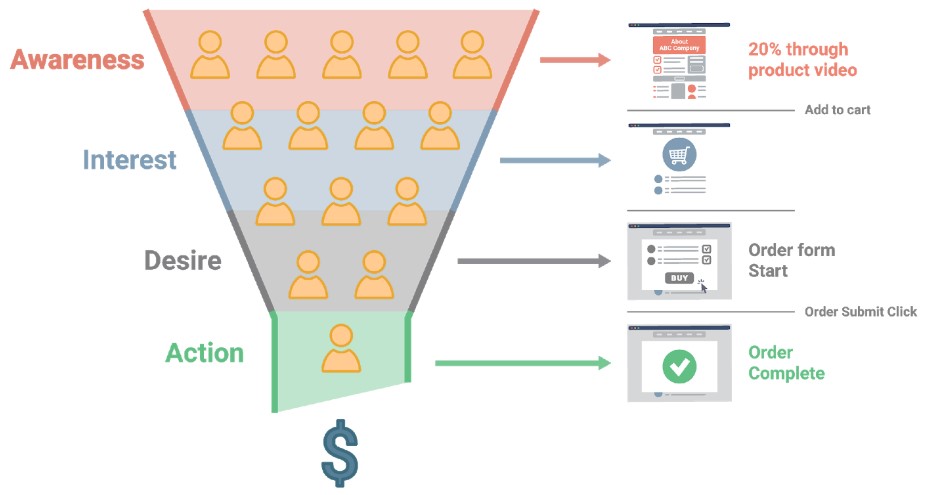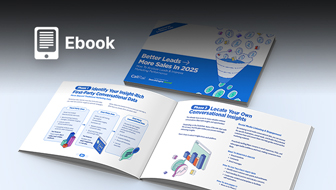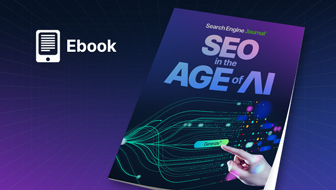Consumers make more than 160 billion searches per month on Google – yielding both organic and paid search results. The Google Display Network lets you display ads on over 2 million websites and apps.
There is a huge opportunity in the Google Ads network for smart advertisers who know how to leverage PPC tools the right way.
On February 20, I moderated a sponsored SEJ ThinkTank webinar presented by Joel Bondorowsky, SEMrush PPC Academy Professor.
Bondorowsky shared tips on how to develop a sustainable PPC campaign that drives results.
Here’s a recap of the webinar presentation.
 PPC advertising beneficial to many brands as it puts advertisers in control. Ad performance is measurable and there are multiple targeting options spread across multiple platforms.
PPC advertising beneficial to many brands as it puts advertisers in control. Ad performance is measurable and there are multiple targeting options spread across multiple platforms.
But before you start any PPC effort, the first thing you need to do is to set a goal. This will form the basis of your PPC strategy.
Creating a winning PPC strategy comes with thoroughly planning, launching, measuring, and evaluating your campaigns.
Here are some things you need to consider in your PPC strategy.
PPC Strategy: What to Consider
Understand Your Audience & Their Intent
You need to have a grasp of who your audiences are and their demographics.
Understanding where they fall along the decision-making funnel is also a must. Which of the following stages are they in?
- Awareness.
- Interest.
- Desire.
- Action.
Choose the Right Tool to Reach Them
There are various PPC platforms available today that provides different ways to reach your prospective customers.
Choose the Right Ad Message to Reach Them With
You can choose to use a variety of ads, but there’s going to be a certain message that will resonate with your audience. In order to find that message, you have to try multiple variations or tests.
One thing to remember is that before you can successfully run campaigns, you have to make the PPC platform successful with the campaigns that you run.
For instance, with Google Ads, they are selling ad impressions – yet they only get paid if you get clicks for that impression. As a result, if you aren’t making the most of those ad impressions and getting clicks for them, you aren’t a successful client.
Engaging ads are essential in order to prove to the PPC platform that you are a good customer for them. If you do that, they will reward you and show your ads more often for less money.
Lead Them to Purchase with a Well Designed Funnel
After you deliver the right message to your audience, you then need to lead them down a journey that is your sales funnel.
Make the effort to think and plan what are the steps that users are taking down the funnel in order to make the purchase.
Evaluate Their Progress with Effective Micro Conversions
Micro conversions are steps that users take which show strong indications that they will become buyers.
The actual sale numbers you make are small compared to the number of people who enter your sales funnel.
You should identify these micro conversion steps and optimize for them so that your campaigns will achieve better results quicker.

Drive More Users Down the Sales Funnel with A/B Testing
A/B testing is essential to determine which funnel can get you better conversions. So what should you test for maximum results?
For a landing page, you can choose between:
- Headline
- Imagery of landing page
- Page layout
- Testimonials
- Sales copy
- Call to action
Search Advertising
Search advertising is a tool that you want to use if the people you’re trying to reach are toward the bottom of the decision-making funnel.
It works best when people are desiring and ready to take action (i.e., purchase a product or service).
Users who click on search ads and go to your landing page are most likely ready to buy. In your landing page, you have to show the following:
- The headline which reflects their search.
- An image of what they are looking for.
- Short sales copy.
- Clear call to action.
- Element to show credibility of the vendor (usually under the CTA).
Use actionable keywords so that people can find you. The searcher’s words indicate intent. You want to go for bottom funnel actionable keywords.
For example, here’s what users at specific stages of the funnel intend to find:
- Awareness: “I have a problem.”
- Interest: “Solution for my problem.”
- Desire: “Product that solves my problem.”
- Action: “Take action.”
Writing Ads
Here are a few tips when writing ads:
- Your headline should reflect the search.
- Try different display URLs
- Your description should:
- Complete the searcher’s inner dialogue.
- Include an element to boost trust and credibility.
- Include a clear call to action.
Test all these different elements when building your ads and make sure to test one thing at a time.
Analyzing Ad Tests
If you’re comparing ads via A/B testing there are two metrics to look at:
- Click-through rates.
- Conversion rates.
But what do you do if the two ads balance each other out? For instance, one ad has the higher CTR and the other ad has a lower CTR but a higher conversion rate, yet the impression to conversion rates are equal on both of them.
If this happens, it is wise to side with the ad that has a higher CTR because that means you’re making Google happier.
Otherwise, you want to go most of the time with the one that’s bringing you more sales for the ad impression.
Shopping Campaigns
If you are reaching people who are on the bottom of the decision-making funnel, you might want to use Shopping Campaigns.
Product listing ads (PLAs) is a campaign type that Google Ads offers that is only available in some regions.
With PLAs, ads are automatically built from your data feed. You must have a Google Merchant account linked to Google Ads. Ads are then triggered by searches for the product, not keywords.
Google Display Network (GDN)
You’ll want to advertise on the Google Display Network if you’re looking to target people who are more toward the top of the decision-making funnel (between the Awareness and Interest ranges).
This is because the GDN allows you to reach many more people that are actually knowing to look for a product.
When you’re advertising in the GDN, the purpose of your display ad is not exactly to sell but to entice an emotion or feeling.
For instance, if you’re selling a B2B productivity tool, the display ad should be about saving time or a new trick to be more productive in the office without actually saying what it is.
The sales copy on your landing page matters the most when you’re advertising in the GDN. Video sales letters can help get better results.
One tip when advertising to people who are not yet ready to purchase is the offer and price shouldn’t be immediately apparent on the landing page.
You must first trigger their curiosity and develop their interest through your copy and then show them the option to purchase toward the end of the page.
The GDN is different from search. You aren’t advertising based on search queries, you are targeting people by:
Content
- Placement targeting
- Topic targeting
- Contextual targeting
People
- Audience Keywords
- Affinity Audiences
- In Market Audiences
- Similar Audiences
- Remarketing
The best practice for advertising in the GDN is to use a combination of targeting options (i.e., content and people).
GDN Ads come in many shapes, sizes and options, such as:
- Banner ads
- Responsive ads
- Text ads
Universal App Campaigns
This type of campaign can only be used if you have to promote mobile app. Ads are only served to users who could install those mobile apps in a click, so this doesn’t work for desktop.
When you set up a Universal App Campaign, your apps can be advertised across various Google properties such as:
- Google Search Network
- Google Display Network
- Play Store
- YouTube
You will need to upload assets, afterward ads are intelligently created and targeting is intelligently optimized. This campaign works best with effective in app tracking.
Here are a few targeting and optimization best practices for Universal App Campaigns.
- Segment by language, not country.
- Start with 50x CPA budget at minimum.
- Use Text assets that vary in length.
- Use high-resolution images of Google’s most popular sizes.
- Optimize for actions that are higher value (when data permits).
Bidding
If you’re running PPC ads and your results aren’t where they need to be, it means you aren’t effectively setting bids on your targeting.
To have control over your bidding, you must have:
- Significant statistics to give effective bids.
- Consistent campaign history.
Bidding is about understanding the value of a click. Here’s how to calculate it.
Value of the sale x conversion rate = Value per Click
Questions & Answers
How long should split testing be done?
Joel Bondoworsky (JB): Until you have significant statistics to declare a winner.
In bid strategy, which should I choose: maximize click/conversions or maximum CPC?
JB: If you’re looking for good traffic, go with Max CPC. Maximum clicks will get you more traffic, but cheaper traffic.
Can you sell services in product listings?
JB: Only physical products.
Can you target competitors websites with display ads?
JB: If your competitor is on the Google Display Network, you can target them. However, publishers have the right to ban any advertising from placing ads on their site, if they wish to do so.
On the landing page layout, do you suggest having the incentive/offer at the bottom? Where should the sales copy be?
JB: If you’re targeting users that are at the top of the decision making funnel, you should start with the sales copy before you show them your offer.
[Video Recap] How to Develop an Effective PPC Strategy to Create Profitable Campaigns
Here’s the video recap of the webinar presentation and Q&A session.
Or review the presentation deck below.
Image Credits
Screenshot taken by author, March 2019
Join Us For Our Next Webinar!
The Data Reveals: What It Takes To Win In AI Search
Register now to learn how to stay away from modern SEO strategies that don’t work.






